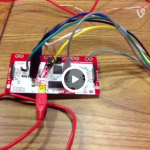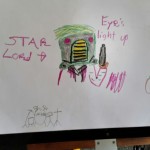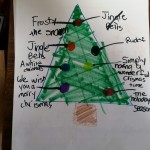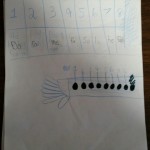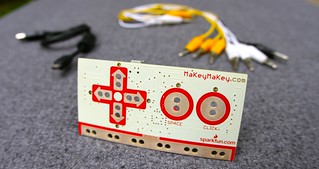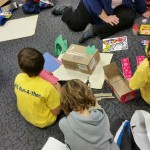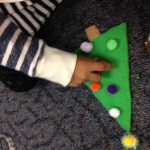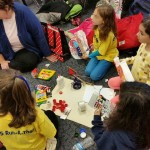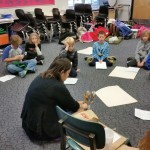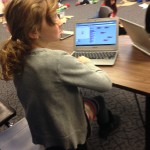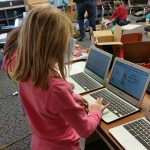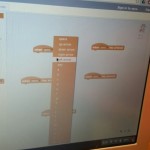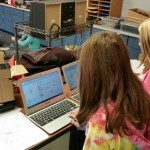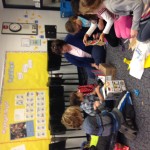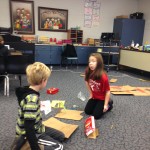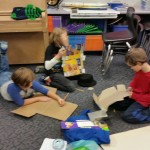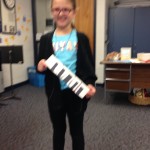Our interactive sculpture unit started by introducing students to Makey Makey boards. They were able to see how the computer could attach to external triggers. Students were able to play with a few Makey Makey demonstration pieces. Then students were asked to plan their own Preliminary designs for their own Makey Makey Project.
Our next session was a construction day. Students began taking their designs and transforming them in to physical pieces of art. Some students learned the iterative cycle of design as their initial designs proved to not conduct electricity, and they had to make design modifications. This is a fantastic learning opportunity to learn that Mistakes are good and part of any design process. Some students decided to start by creating computer programs that will allow their Makey Makey projects to have customized sounds. They started by creating or finding the sounds they wanted, and programming those sounds using SCRATCH, a programming language designed for children.
On our final construction day we focused on how the design process allows us to make revisions. We learn from our mistakes and tweak our designs. Several students finished their projects and worked on the coding aspect of their interactive work of art. Many students programmed different pieces of their art to make different noises / sounds /songs. Some students even recorded their own sounds.
I included a few pictures of the Physical Makey Makey board so you can see, and pictures of the SCRATCH interface. Below the pictures are videos of each student presentations.
Below the project information is links to the standards our Makey Makey unit addresses.
*Please contact steve@rubberbandproject if you our your school district are interested in learning more about this project
CCSS.ELA-LITERACY.RST.6-8.3: Follow precisely a multistep procedure when carrying out experiments, taking measurements, or performing technical tasks.CCSS.ELA-LITERACY.RST.9-10.8: Assess the extent to which the reasoning and evidence in a text support the author’s claim or a recommendation for solving a scientific or technical problem.MS-ETS1-1: Define the criteria and constraints of a design problem with sufficient precision to ensure a successful solution, taking into account relevant scientific principles and potential impacts on people and the natural environment that may limit possible solutions.MS-ETS1-2: Evaluate competing design solutions using a systematic process to determine how well they meet the criteria and constraints of the problem.
HS-PS3-3: Design, build, and refine a device that works within given constraints to convert one form of energy into another form of energy.
(VA:Cr1.1.4a) Brainstorm multiple approaches to a creative art or design problem.
(VA:Cr2.1.4a) Explore and invent art-making techniques and approaches.
(MA:Pr4.1.4) Practice combining varied academic, arts, and media content into unified media artworks, such as a narrated science animation.
(MA:Pr5.1.4) c. Demonstrate use of tools and techniques in standard and novel ways while constructing media artworks.
(MA:Pr6.1.3) b. Identify and describe the experience, and share results of and improvements for presenting media artworks.
(MA:Cn11.1.3) b. Examine and interact appropriately with media arts tools and environments, considering safety, rules, and fairness.
